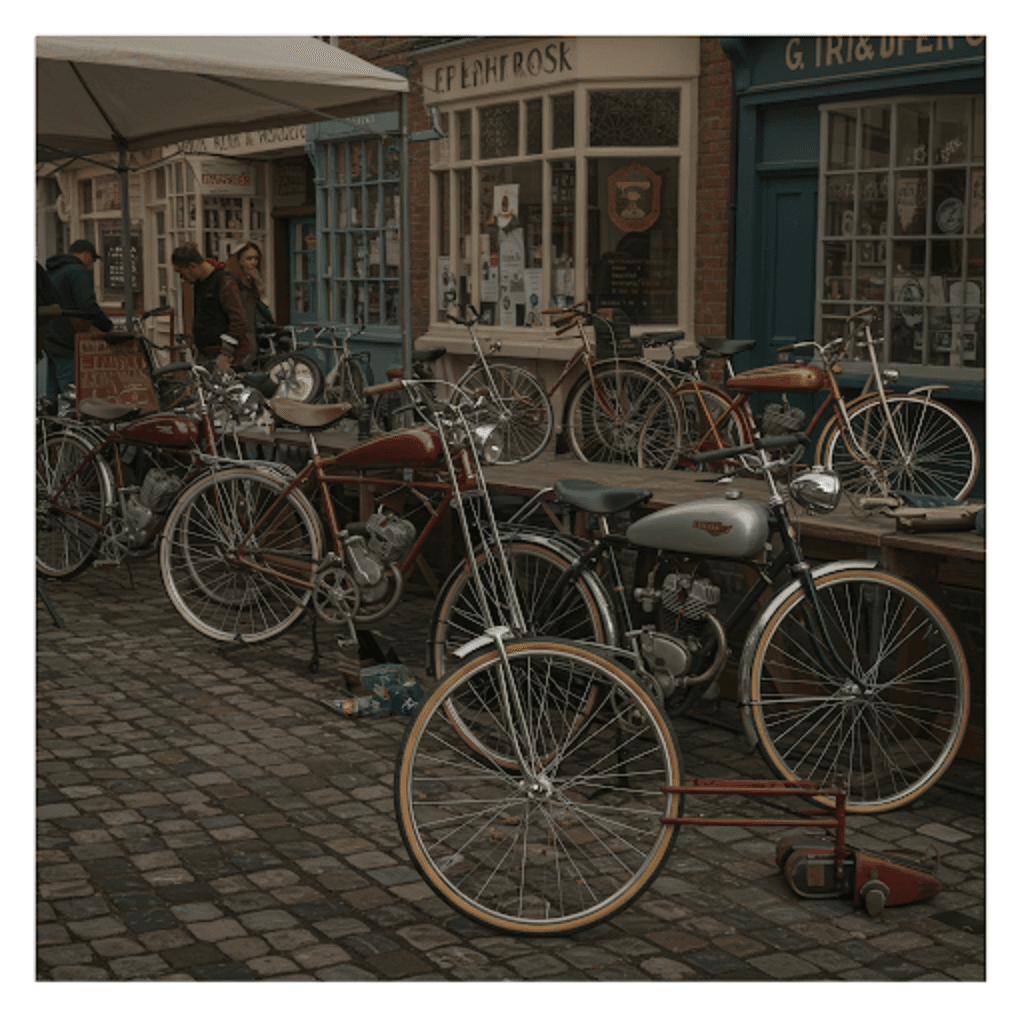
The Allure of Classic Bikes: A Guide to Finding Your Perfect Ride in the UK
There’s something undeniably captivating about a classic bike. It’s more than just a mode of transport; it’s a piece of history, a rolling work of art, and a statement of style. Whether you’re a seasoned collector or a newcomer drawn to the timeless aesthetics, the UK offers a vibrant market for finding and purchasing classic bicycles. This article delves into the world of classic bikes, offering advice on where to look, what to consider, and how to ensure you’re getting a genuine piece of cycling heritage.
Defining “Classic”: What Makes a Bike a Classic?
The term “classic” can be subjective, but generally, it refers to bikes that are no longer in production and possess a certain historical significance, unique design, or cultural impact. Age is a factor, but it’s not the sole determinant. A bike from the 1980s might be considered classic if it represents a pivotal moment in cycling technology or design, while a more recent model, even if out of production, might not yet qualify.
Several factors contribute to a bike’s classic status:
- Age: Generally, bikes over 25-30 years old are considered vintage, and those older can fall into the classic category.
- Rarity: Limited production runs or bikes with unique features often become highly sought-after.
- Condition: Originality and condition significantly impact value. A well-preserved, original bike is far more desirable than one that’s been heavily modified or is in poor repair.
- Historical Significance: Bikes associated with famous races, riders, or manufacturers often hold greater value.
- Design and Engineering: Innovative designs, unique frame materials, or pioneering technology can elevate a bike to classic status.
Where to Find Classic Bikes for Sale in the UK
The UK boasts a thriving classic bike scene, with numerous avenues for finding your dream machine. Here are some of the best places to look:

- Specialist Classic Bike Dealers: These dealers are experts in vintage and classic bicycles. They typically offer a curated selection of high-quality bikes, often with detailed provenance and restoration work. While prices may be higher, you’re paying for expertise and peace of mind.
- Online Marketplaces: Websites such as eBay, Gumtree, and Preloved frequently list classic bikes for sale. This option offers a vast selection, but it requires careful scrutiny. Always ask detailed questions, request numerous photos, and, if possible, inspect the bike in person before committing to a purchase.
- Auction Houses: Both general and specialist auction houses occasionally feature classic bikes. This can be an excellent way to find rare or unique models, but be prepared for competitive bidding.
- Classic Bike Shows and Autojumbles: These events are a treasure trove for classic bike enthusiasts. You’ll find a wide range of bikes for sale, along with parts, accessories, and a community of like-minded individuals.
- Cycling Clubs and Forums: Local cycling clubs and online forums dedicated to classic bikes can be valuable resources. Members often buy and sell bikes within the community, and you can benefit from their collective knowledge and experience.
- Word of Mouth: Let friends, family, and colleagues know you’re looking for a classic bike. You never know who might have a hidden gem tucked away in their garage or shed.
Things to Consider Before Buying a Classic Bike
Before parting with your cash, it’s crucial to thoroughly assess the bike’s condition and authenticity. Here’s a checklist of things to consider:
- Frame Condition: Check for rust, dents, cracks, or any signs of previous repairs. Pay particular attention to the areas around the bottom bracket, head tube, and dropouts.
- Components: Are the components original to the bike? If not, are they period-correct replacements? Mismatched or incorrect components can significantly devalue a classic bike.
- Paintwork: Original paint, even with some patina, is generally preferred over a respray. If the bike has been repainted, assess the quality of the work.
- Serial Number: Check the frame’s serial number and research it to verify the bike’s year of manufacture and model.
- Provenance: If possible, try to trace the bike’s history. Previous ownership records, original receipts, or any documentation can add to its value and authenticity.
- Test Ride: If possible, take the bike for a test ride to assess its mechanical condition. Check the gears, brakes, and overall ride quality.
- Size: Make sure to get the right size of bike for your height, it will impact the comfort and enjoyability of your rides.
Restoring vs. Preserving: A Delicate Balance
If you find a classic bike that needs some work, you’ll face the decision of whether to restore it to its former glory or preserve its original condition. This is a delicate balance, and the best approach depends on the bike’s rarity, condition, and your personal preferences. A full restoration can make a bike look pristine, but it can also erase some of its history and potentially reduce its value to collectors. Preservation, on the other hand, focuses on retaining as much of the original bike as possible, even if it shows signs of age and wear.
Embracing the Ride
Owning a classic bike is more than just owning a machine; it’s about connecting with cycling’s rich past. Whether you’re cruising through city streets or exploring country lanes, a classic bike offers a unique and rewarding riding experience. The feel of steel beneath you, the whir of vintage components, and the admiring glances from fellow cyclists are all part of the allure. So, take your time, do your research, and find the classic bike that speaks to your soul. The open road awaits.







